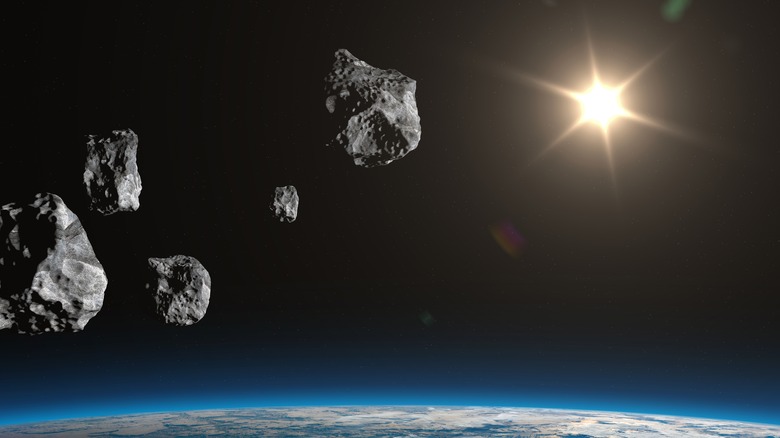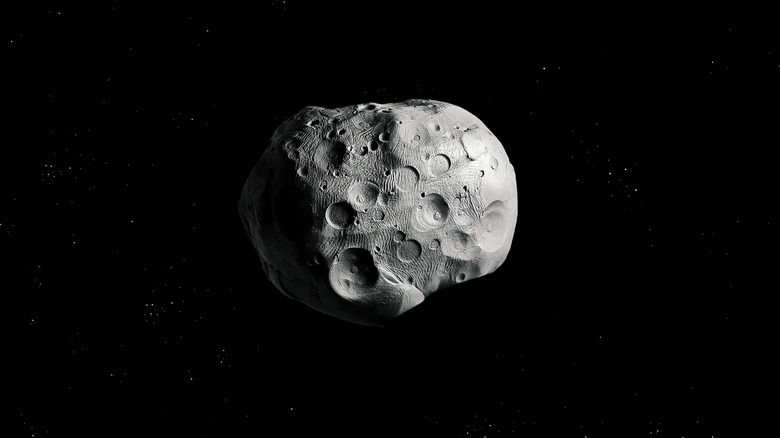Inside NASA's Historic Test To Protect The Earth From Asteroids
According to HowStuffWorks, it's unlikely that an asteroid will hit Earth anytime soon. Gizmodo reports that NASA regularly checks on 28,000 asteroids that are close by. As of yet, these asteroids do not pose a threat to our planet. However, in the case that an asteroid does hit the Earth, its range of destruction is solely dependent on its size and speed.
David Morrison of the National Aeronautics and Space Administration's Ames Research Center explained: "For example, a comet less than 100 meters across (about 109 yards) will explode high in the atmosphere and probably do no harm whatsoever. If the comet is 10 kilometers (roughly 62 miles) across or larger (that is, if the impact carries an energy of more than about 100 million megatons), the resulting global environmental damage will be so extensive that it will lead to a mass extinction, in which most life forms die" (via Scientific American).
Another article by Gizmodo writes that scientists have been working on a solution to prevent this from happening. The publication notes that nuclear weapons could be used to destroy any asteroid that is heading to Earth. Nevertheless, this could pose a new set of problems as the debris of the impact could potentially land on Earth. Now, NASA has a new remedy to protect the planet from asteroids; the Double Asteroid Redirection Test mission (DART) (per the Independent).
The impact will destroy DART
Launched in November 2021, the Independent reports that DART is a small spacecraft built to collide with an asteroid called Dimorphos. Per Gizmodo, DART was designed by the Johns Hopkins Applied Physics Laboratory (APL) to uncover if it can possibly modify the direction of an asteroid. As Robert Braun from the APL explained, "For the first time ever, we will measurably change the orbit of a celestial body in the universe" (via CNN). The Independent explains that Dimorphos, a small asteroid that poses no risk to Earth, was chosen as it orbits a larger asteroid known as Didymos.
Dimorphos, per CNN, is 6.8 million miles away from Earth. It's believed that DART will collide with Dimorphos at 15,000 miles per hour on September 26. As CBS News points out, the goal doesn't involve obliterating Dimorphos. The hope is that DART, by destroying itself on impact, will change Dimorphos' motion and speed (via Gizmodo). If everything goes as planned, the Independent notes that this is a starting point regarding how NASA will use technology to protect the Earth from any life-threatening asteroids in the future. CNN predicts that it will change Dimorpho's speed by 1% if successful.
The collision will be captured by a special spacecraft
Although 1% seems like a minuscule figure, Nancy Chabot from the APL told CNN "Sometimes we describe it as running a golf cart into a great pyramid or something like that." She added, "But for Dimorphos, this really is about asteroid deflection, not disruption. This isn't going to blow up the asteroid; it isn't going to put it into lots of pieces." Chabot explained that this change would not transform the harmless asteroid into a potentially dangerous one. That said, CBS News reports that DART did not travel alone. With it, was a small but significant spacecraft known as the LICIACube.
According to CBS News, the LICIACube was released 10 days before DART's scheduled impact on September 26. Ars Technica explains that the LICIACube has two cameras to take images of this long-awaited moment. Furthermore, it will encounter Dimorphos only three minutes after its impact with DART. Designed by the Italian Space Agency (ASI), the hope is that it will capture the mission's success and the size of the crater created by DART.
CNN adds that the LICIACube will also record footage of this. However, these images and videos will not be available for weeks or months. Gizmodo writes that this is only the beginning as a follow-up mission called HERA will study Dimorphos and DART's impact. Viewers can live stream DART on NASA's website and social media pages on September 26 at 6 p.m. ET (per CBS News).


